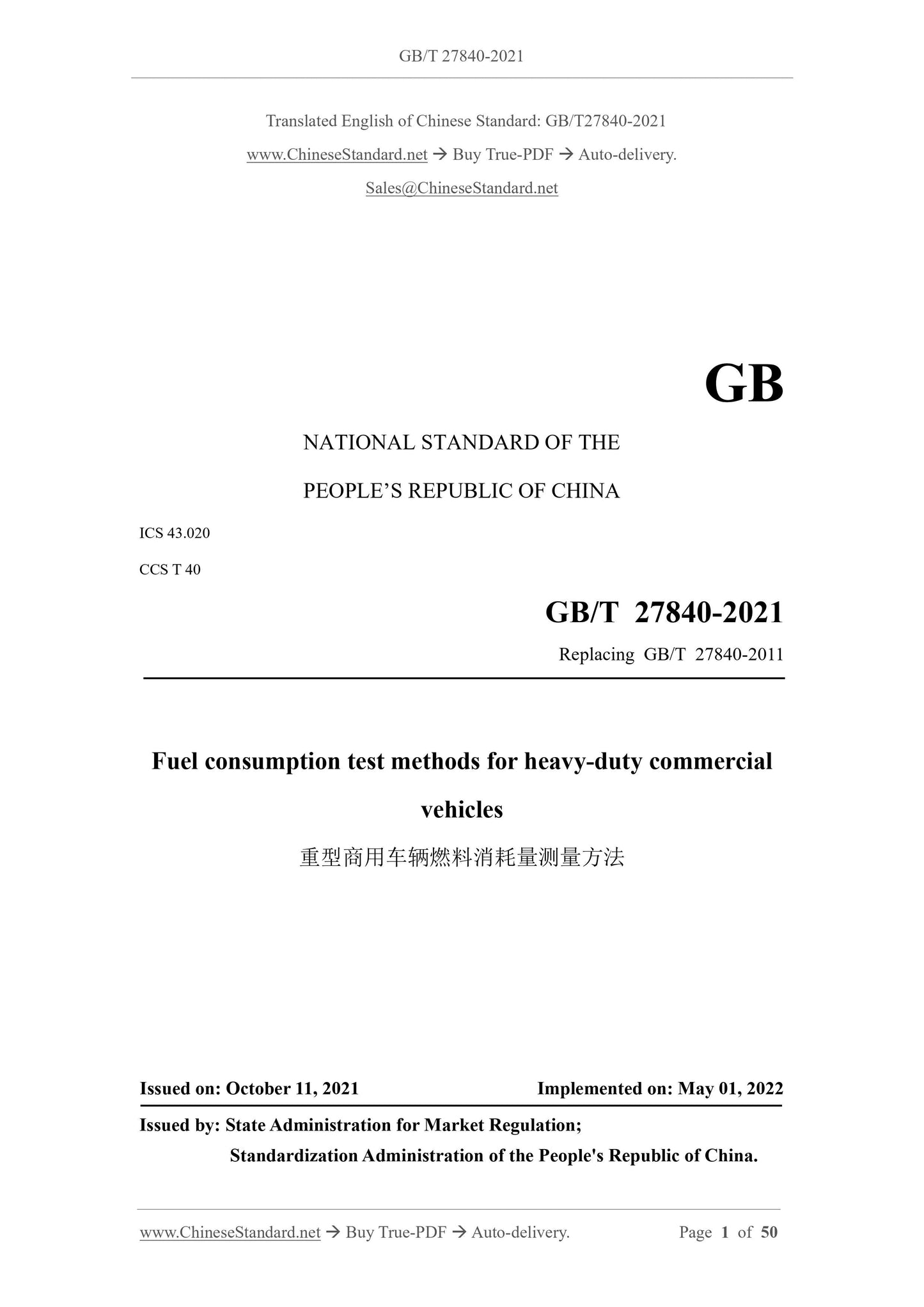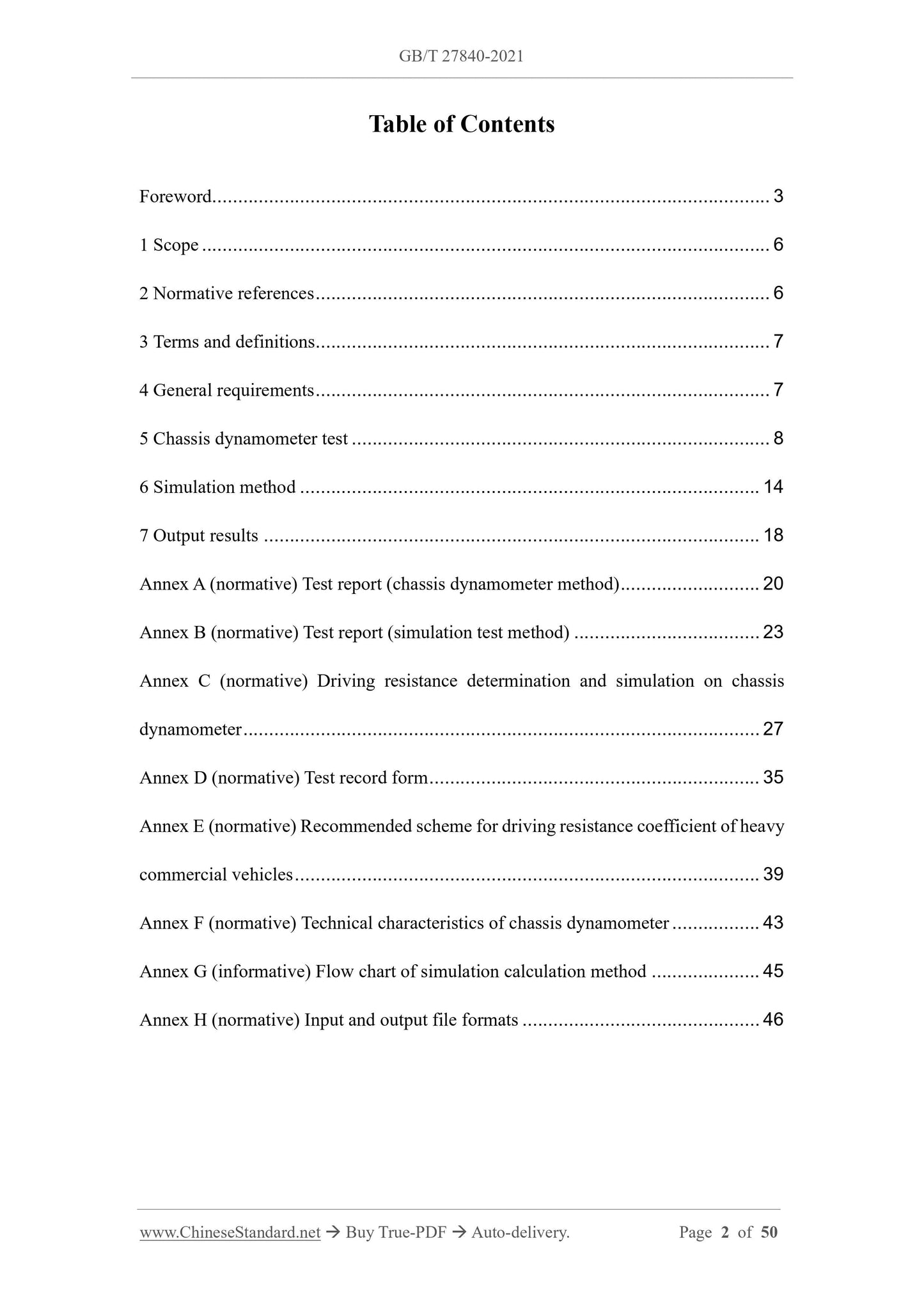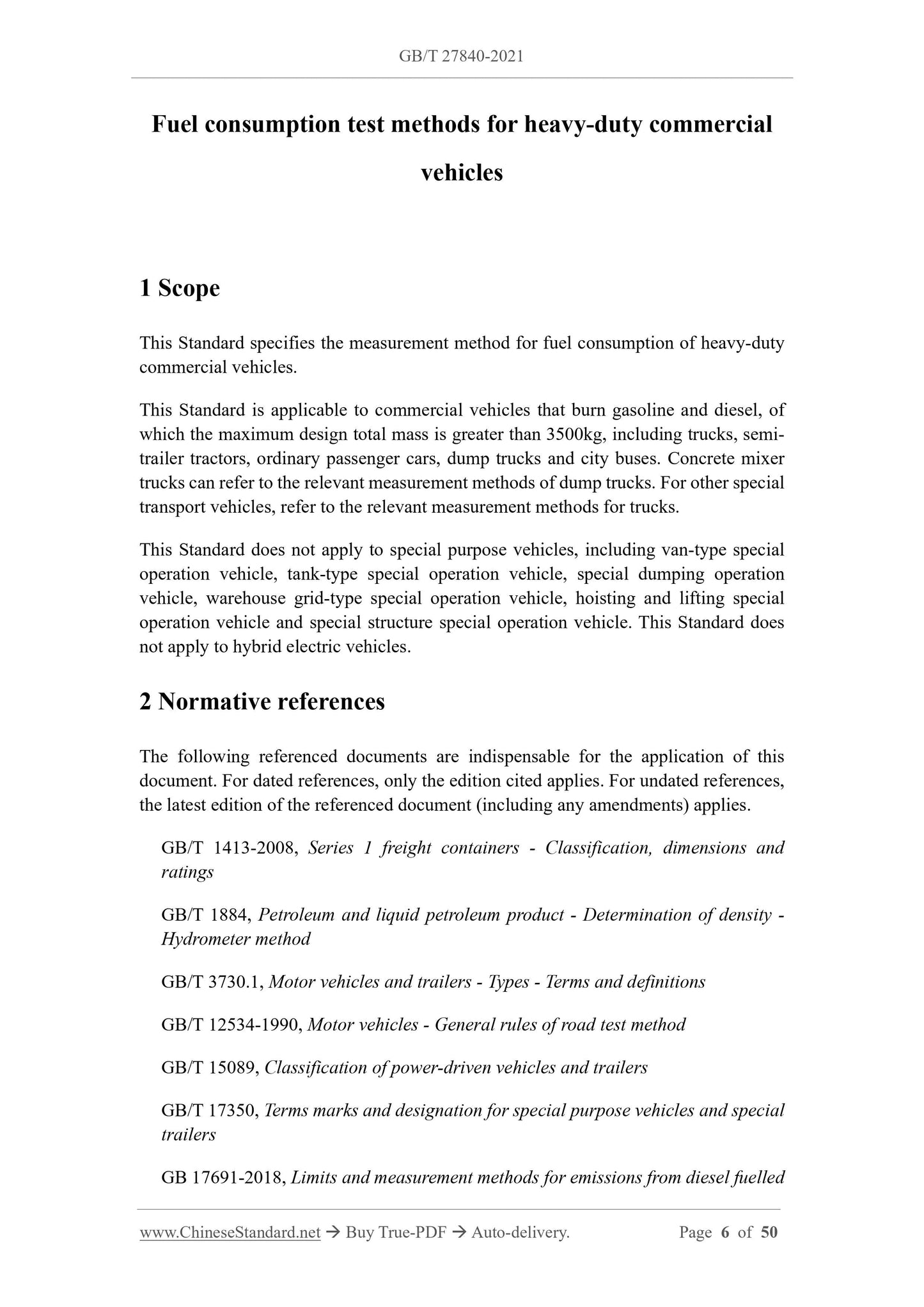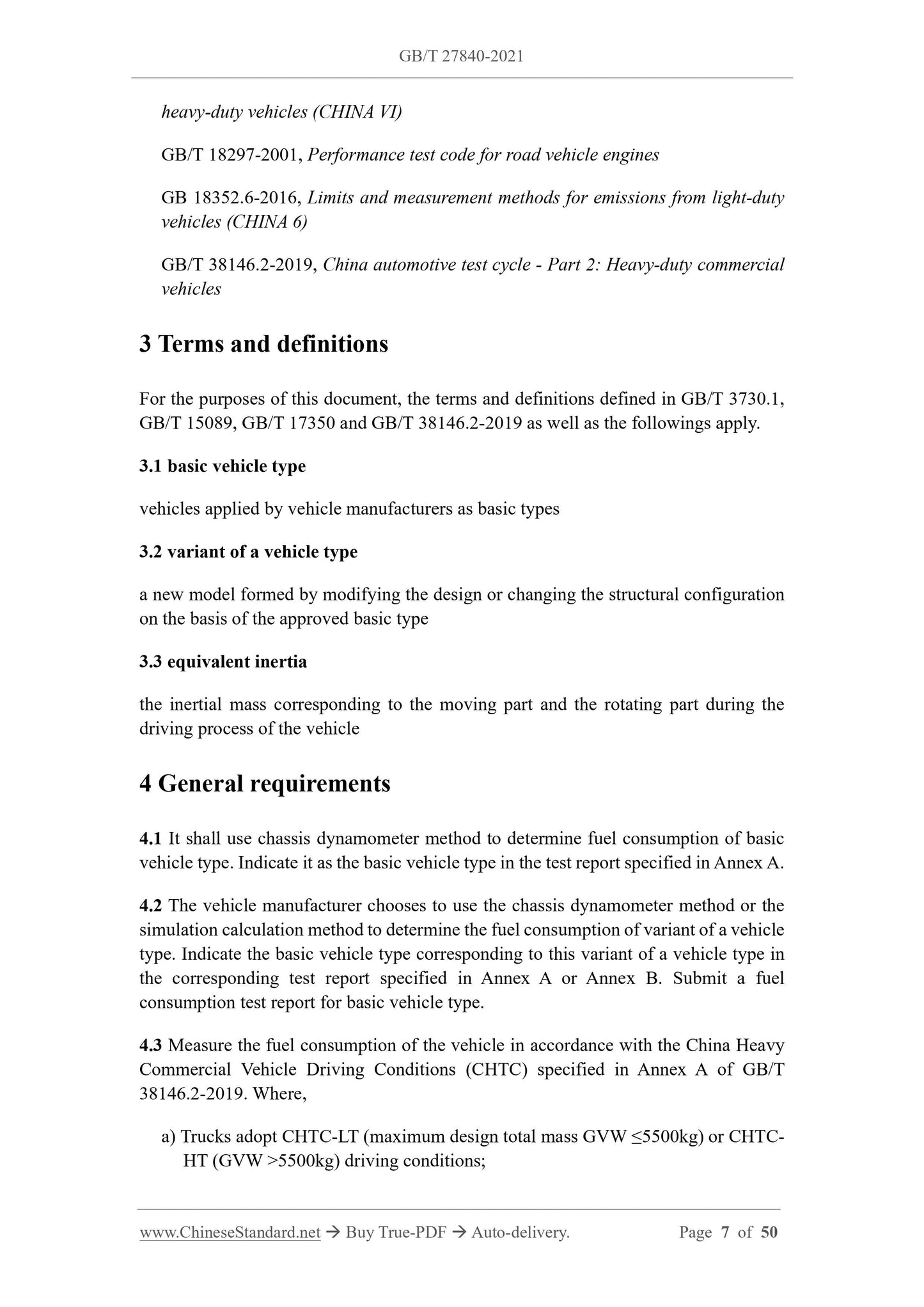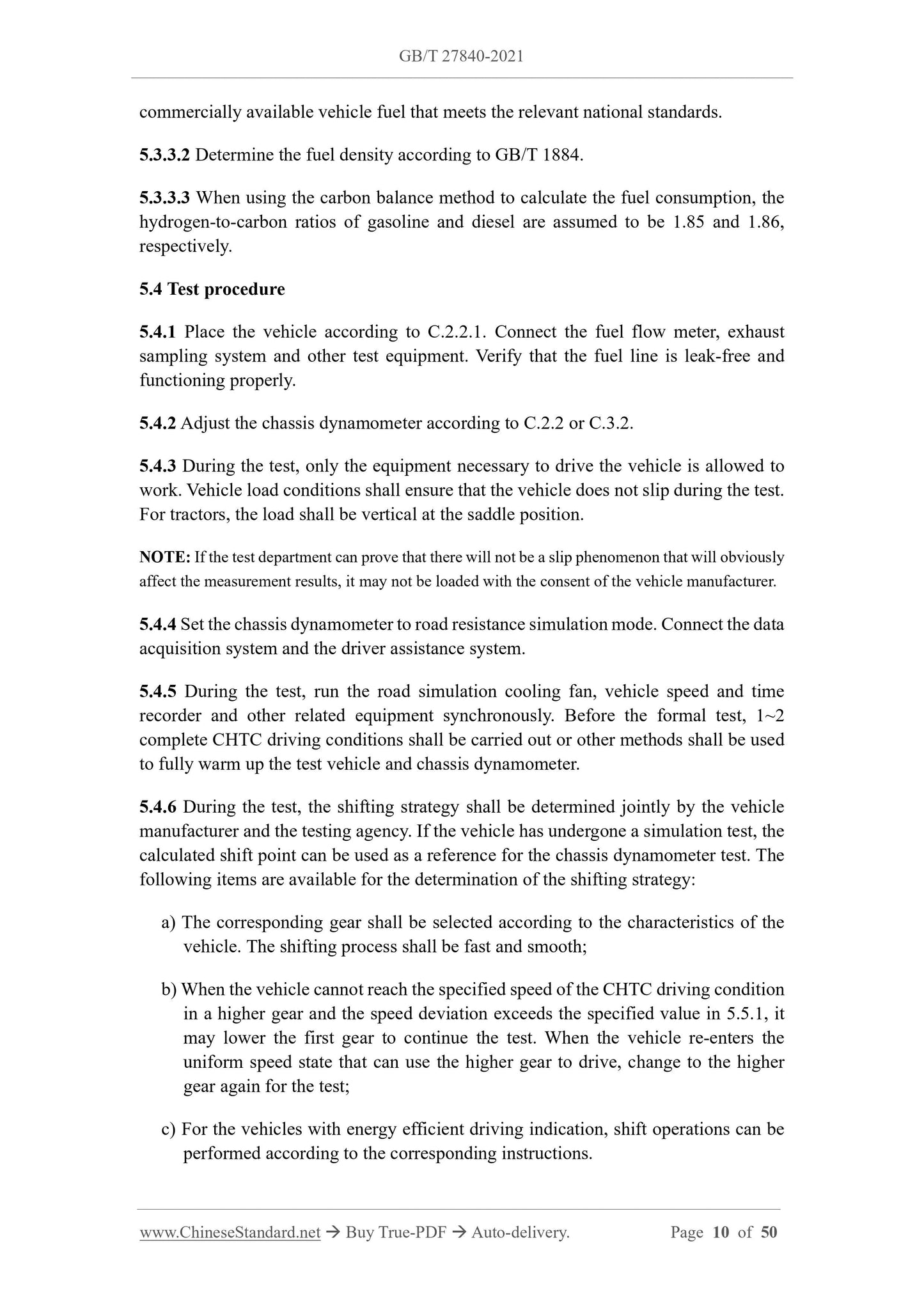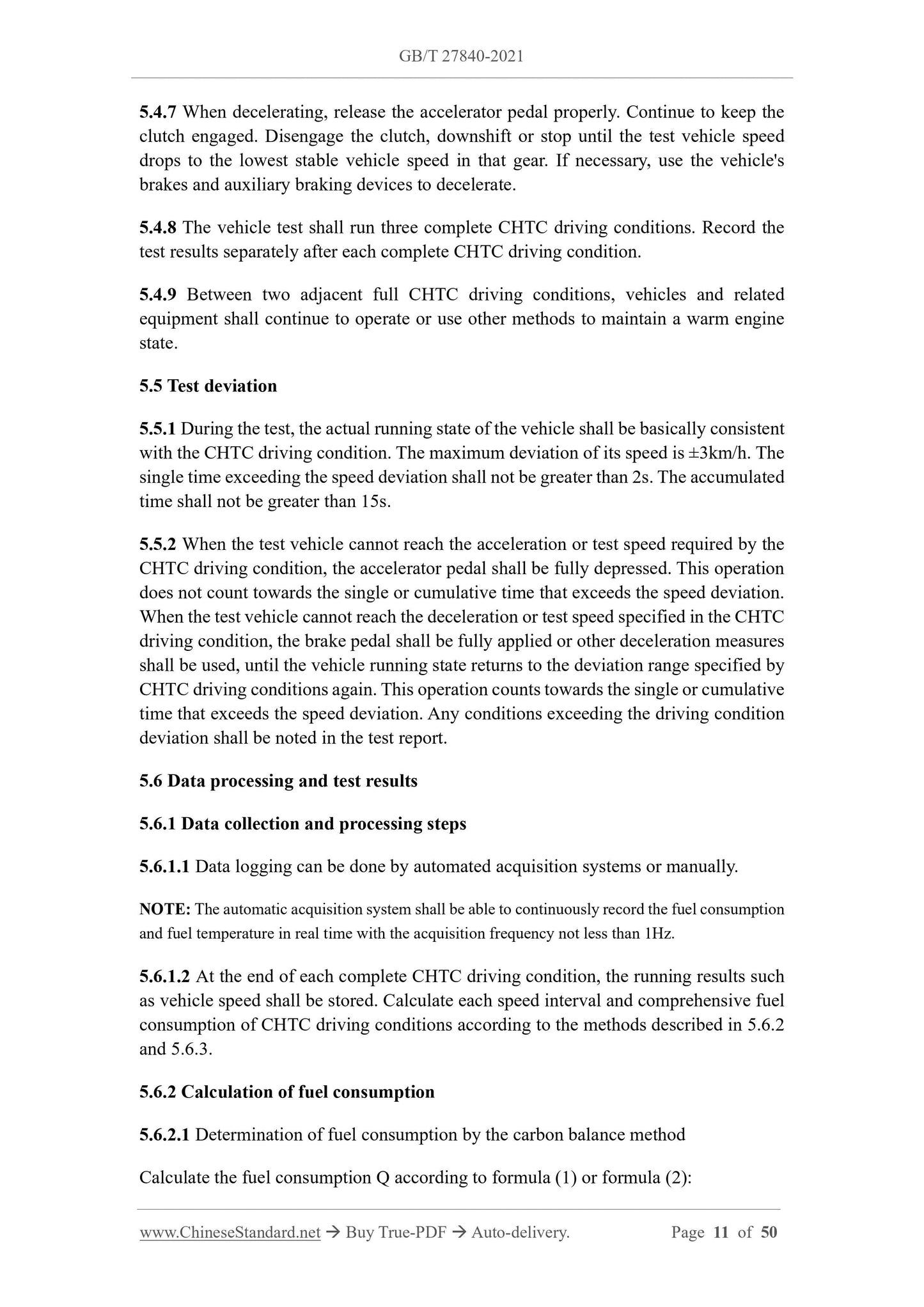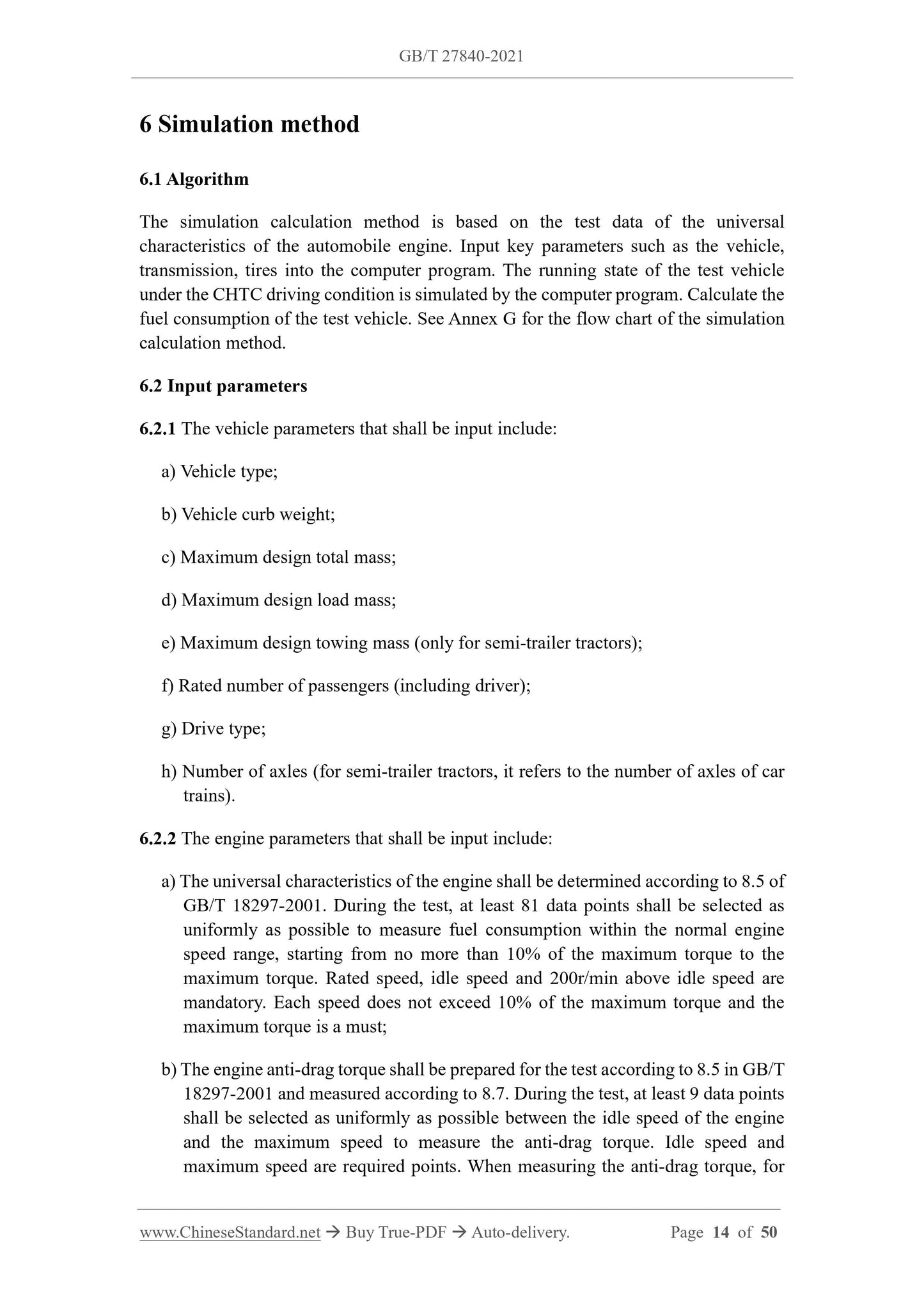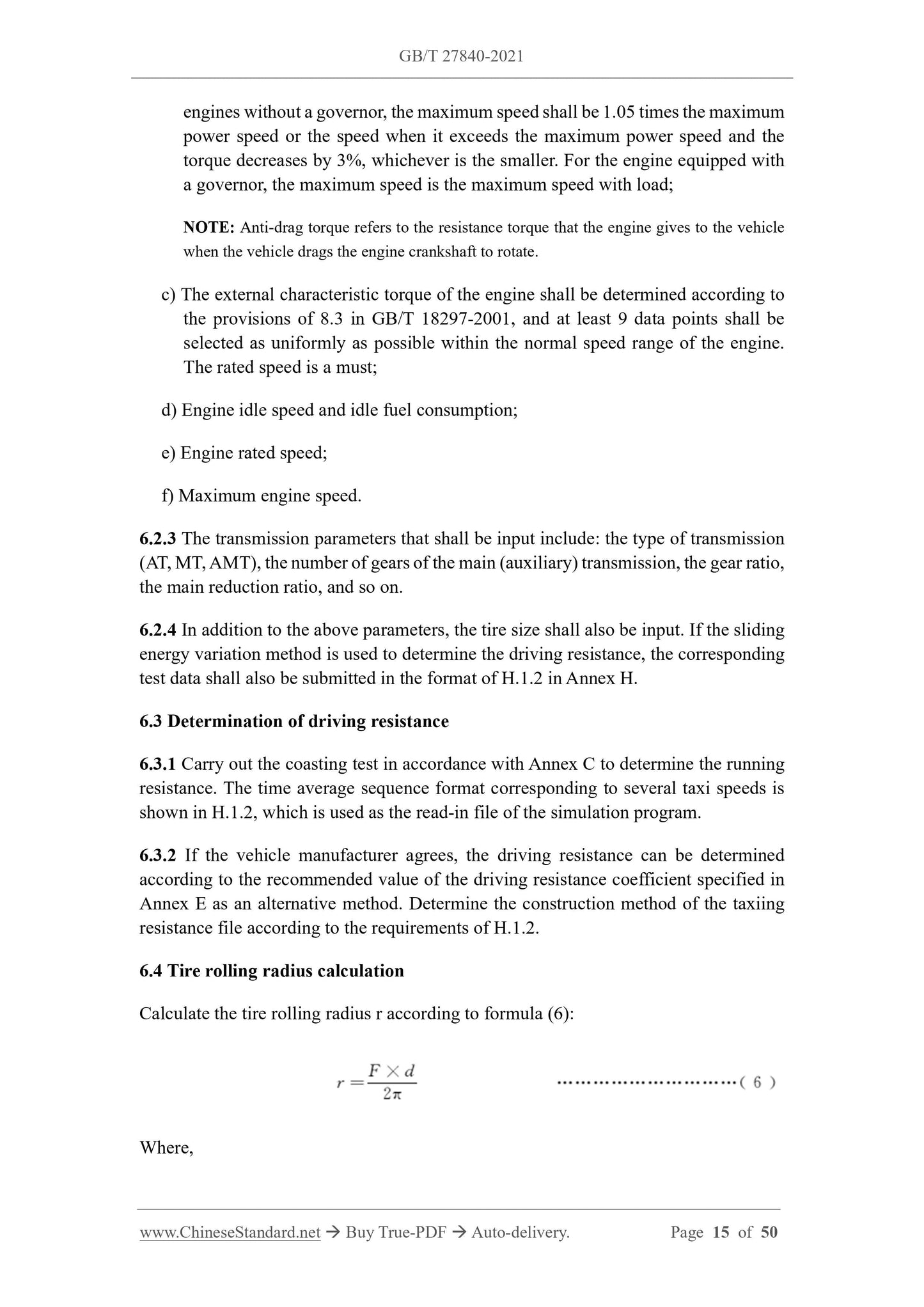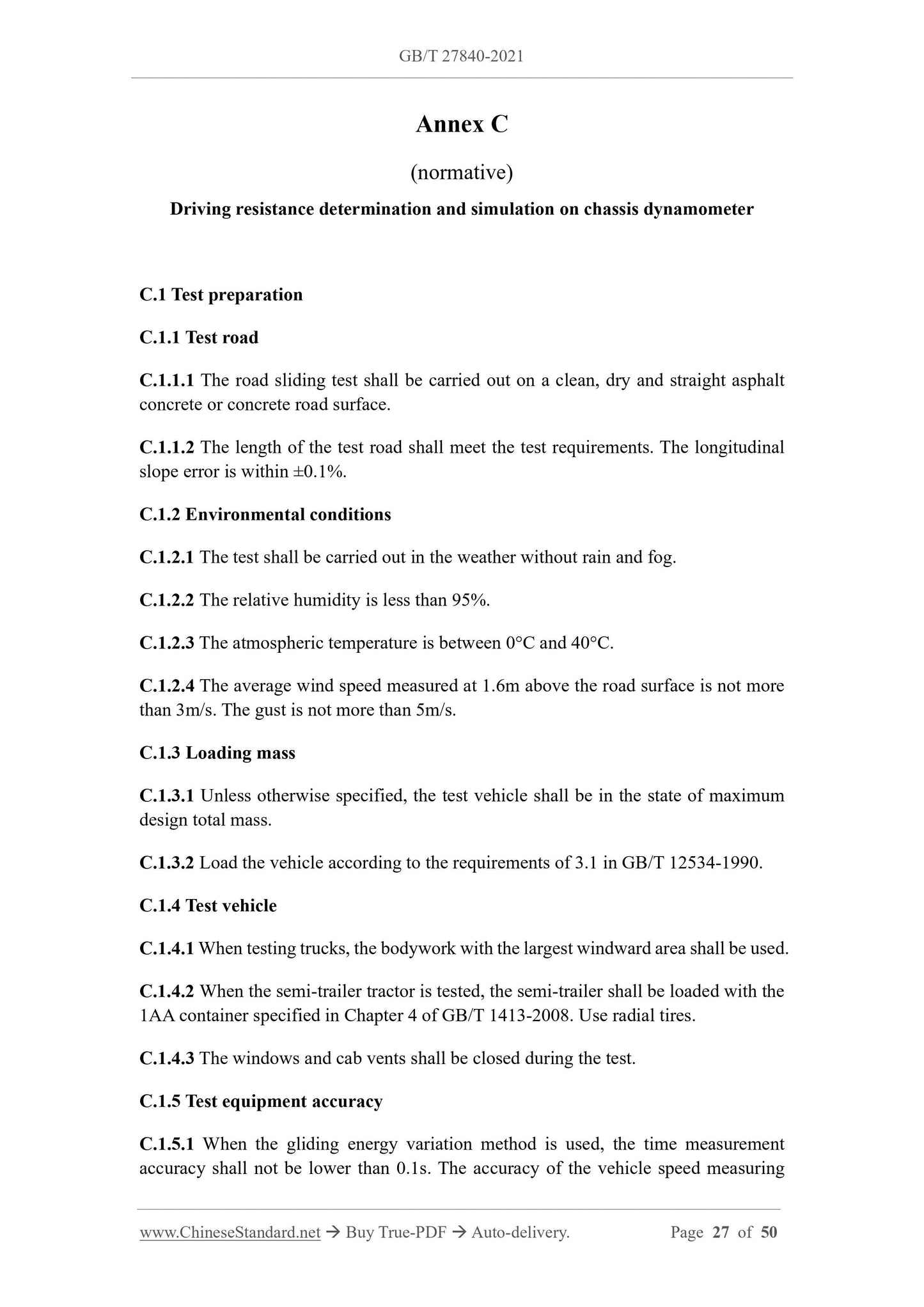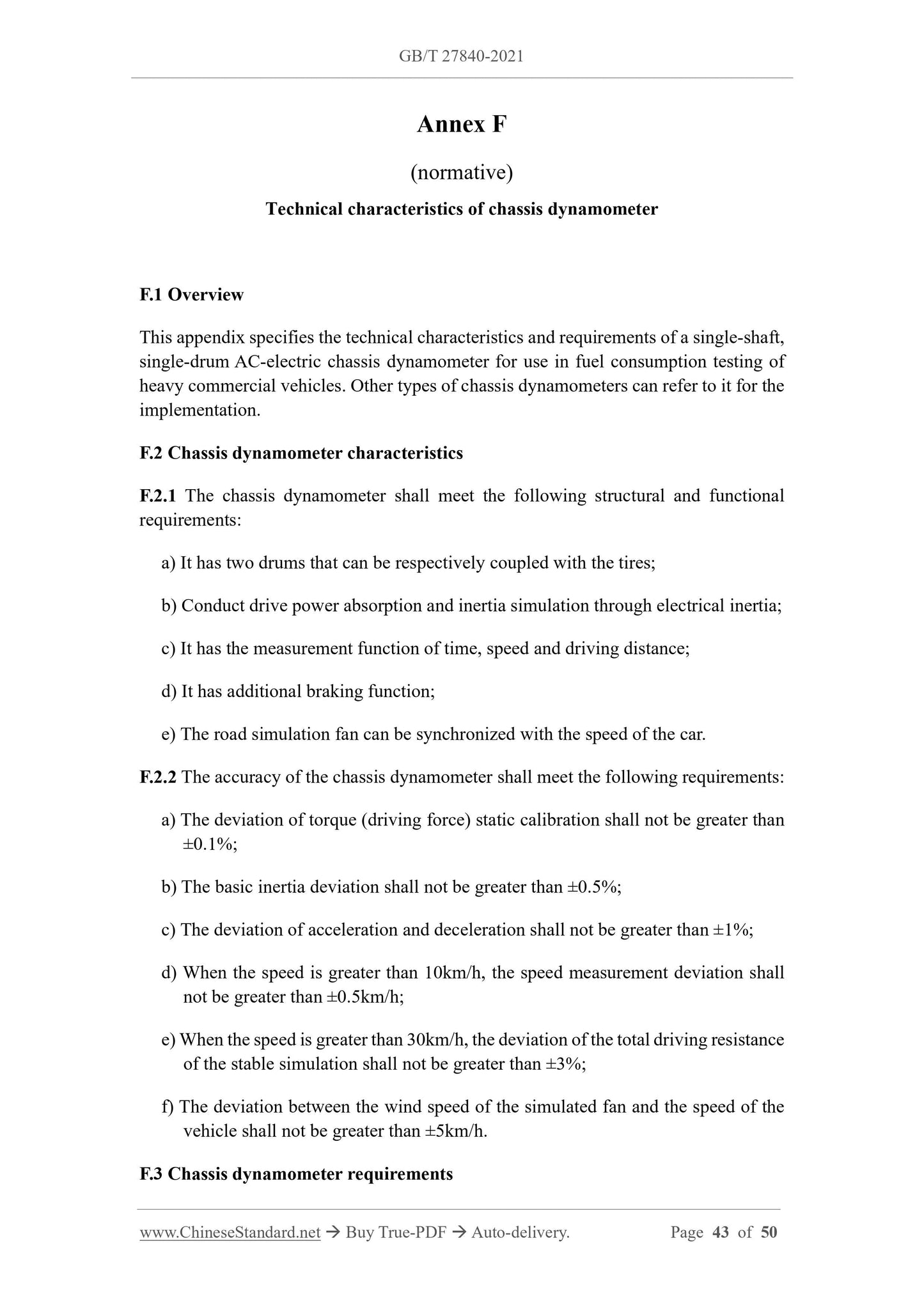1
/
of
10
www.ChineseStandard.us -- Field Test Asia Pte. Ltd.
GB/T 27840-2021 English PDF (GB/T27840-2021)
GB/T 27840-2021 English PDF (GB/T27840-2021)
Regular price
$515.00
Regular price
Sale price
$515.00
Unit price
/
per
Shipping calculated at checkout.
Couldn't load pickup availability
GB/T 27840-2021: Fuel consumption test methods for heavy-duty commercial vehicles
Delivery: 9 seconds. Download (and Email) true-PDF + Invoice.Get Quotation: Click GB/T 27840-2021 (Self-service in 1-minute)
Newer / historical versions: GB/T 27840-2021
Preview True-PDF
Scope
This Standard specifies the measurement method for fuel consumption of heavy-dutycommercial vehicles.
This Standard is applicable to commercial vehicles that burn gasoline and diesel, of
which the maximum design total mass is greater than 3500kg, including trucks, semi-
trailer tractors, ordinary passenger cars, dump trucks and city buses. Concrete mixer
trucks can refer to the relevant measurement methods of dump trucks. For other special
transport vehicles, refer to the relevant measurement methods for trucks.
This Standard does not apply to special purpose vehicles, including van-type special
operation vehicle, tank-type special operation vehicle, special dumping operation
vehicle, warehouse grid-type special operation vehicle, hoisting and lifting special
operation vehicle and special structure special operation vehicle. This Standard does
not apply to hybrid electric vehicles.
Basic Data
| Standard ID | GB/T 27840-2021 (GB/T27840-2021) |
| Description (Translated English) | Fuel consumption test methods for heavy-duty commercial vehicles |
| Sector / Industry | National Standard (Recommended) |
| Classification of Chinese Standard | T40 |
| Word Count Estimation | 34,394 |
| Issuing agency(ies) | State Administration for Market Regulation, China National Standardization Administration |
Share
